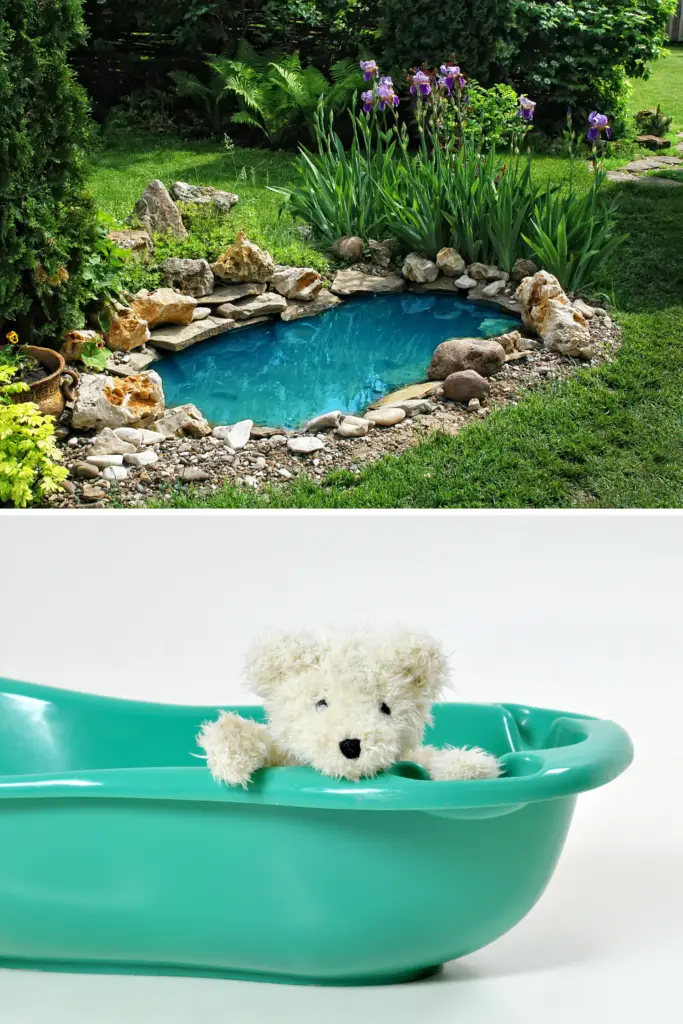
Linings are the foundation of every pond. Just as the foundation of a building determines the strength and life expectancy of the structure, the lining used in a koi pond will determine how much maintenance will be needed and the ultimate life expectancy.
The 9 pond liner alternatives include the following materials.
- Concrete Pond Liner.
- Lime and Clay Cover.
- Bentonite Or Chemical Additives.
- Polyethylene Pond Liner.
- HDPE
- LLDPE Pond Liner.
- RPE (Reinforced Polyethylene) Liner.
- PVC Liners.
- EPDM Pond Liner.
Koi pond liners are large, foldable waterproof sheets made of plastic or synthetic rubber, ensuring the pond’s ability to remain impermeable. A pond lining’s flexibility, weight, and thickness determine how tricky it is to install and how durable it will ultimately be.
Pro Tip: If you’re tired of wasting money and making costly mistakes on the koi-keeping hobby or are thinking about buying koi fish but don’t know where to start, I strongly suggest you check out this ebook. I recently read this ebook, and it contains SO much useful information, such as:
- 3 proven steps to identify koi fish diseases
- WARNING: 3 things you should NEVER do when it comes to caring for koi
- When to seek professional help when it comes to looking after your koi
Concrete Pond Liner
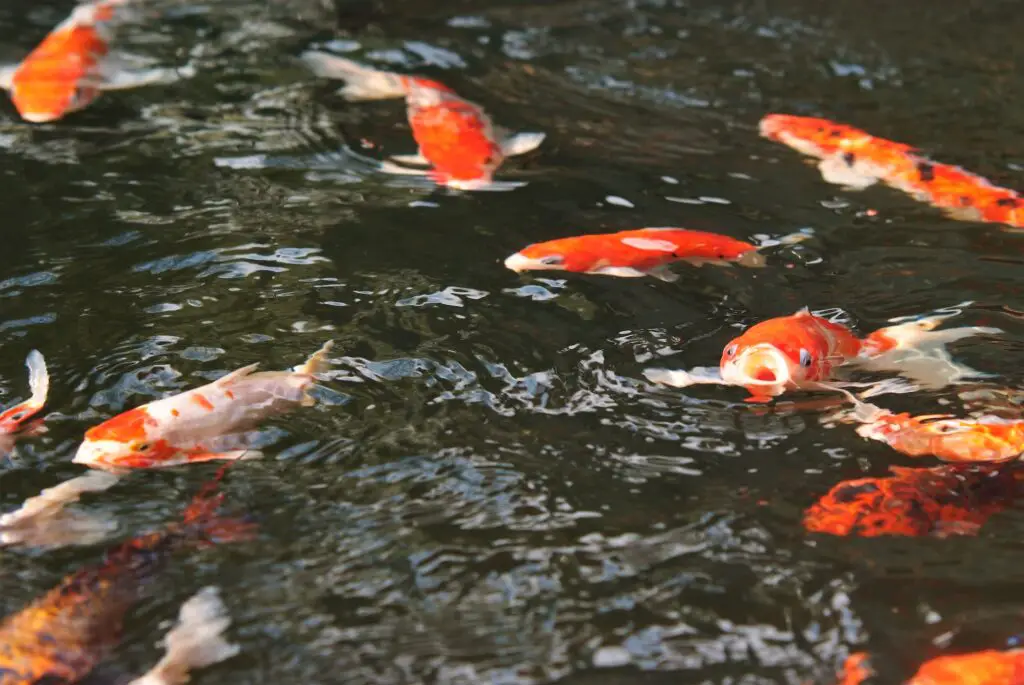
If you have the land and clay soil, you might not need a pond liner. There is a move in the koi community to use natural mud ponds for koi; however, this is only viable if you have access to suitable clay soil.
If you don’t have access to suitable soil, you will need a waterproof material to line the pond.
If you are looking for a durable material that can be molded to the different shapes in the pond, a concrete liner is the first choice.
Mixing the material with a plastic reinforcing mix resists the formation of cracks while making the pond waterproof.
Application is not hard; however, plastering skills will be an advantage.
Render the sides with the concrete mix, ensuring the finish is as smooth as possible with no sharp edges or tight corners. Only one coat is needed.
The optimal mix of the plaster render is.
- One part cement.
- Two parts are soft sand.
- Twelve pounds (½ Kg) of plastic reinforce fiber mix.
If the “plaster” mix is rendered properly with a steel render tool, the sides will be very smooth and fully waterproof.
Lime and Clay Cover
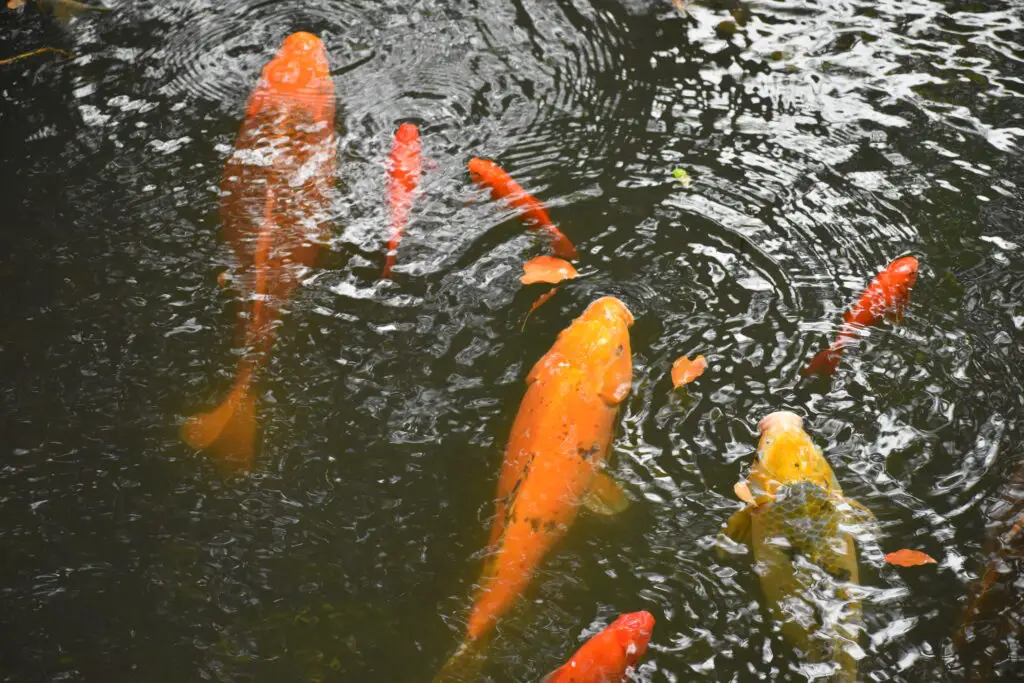
Lime is used as a binding material, and when it is combined with soil, the result is lime concrete which is impermeable.
As with concrete pond liners, lime concrete can be molded to different shapes on the floor and can be used to add curves to sharp corners.
If the lime is mixed with a plastic reinforcement material, the strength is increased substantially.
Adding lime to the koi pond causes the alkalinity to increase. It decreases the amount of free carbon dioxide in the water, which benefits the koi.
To apply the lime and clay cover.
- First, apply a layer of lime 4 – 6 cm thick.
- Spread a 6 cm layer of clay over the lime. Ensure the clay’s texture is “plasticky” and is not dry. The clay must be moist for it to bind with the lime.
Bentonite Or Chemical Additives
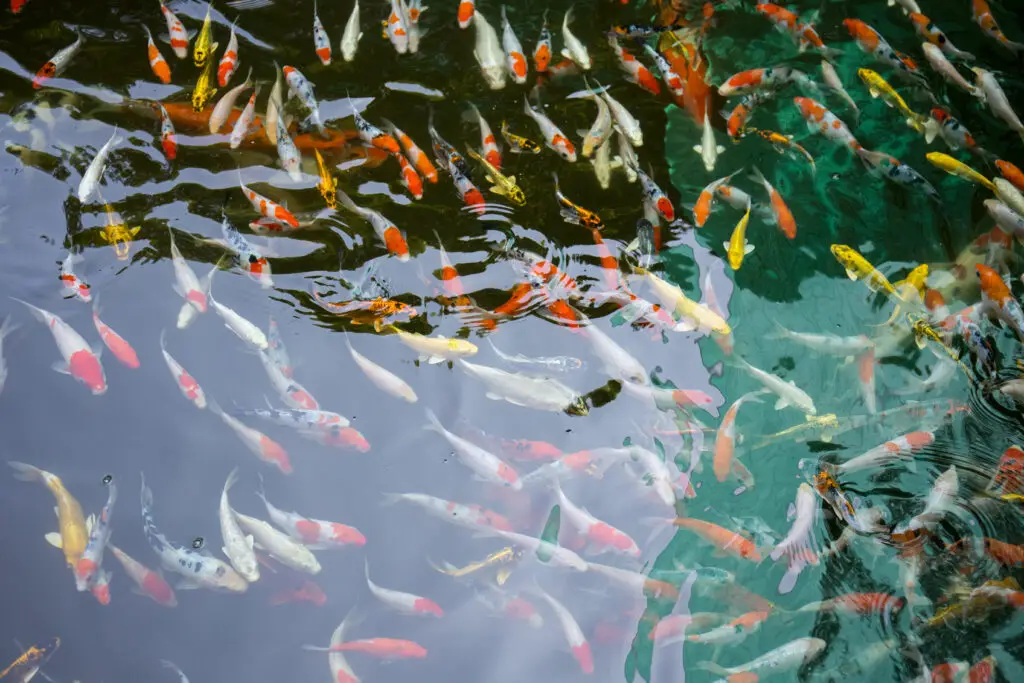
Bentonite is a fine-textured colloidal clay that absorbs its weight in water several times. It will swell to between 8 to 15 times its original volume when it is saturated.
To apply the Bentonite, spread it evenly over the area to be sealed and then disk it in or till it in, about 2-3 inches from the ground with the soil, and compact it afterward.
Saturate the mix with water, and bentonite particles fill the coarse material’s pores, making it waterproof.
Bentonite clay contains minerals and trace elements, including hydrated aluminosilicate of calcium, magnesium, potassium, manganese, sodium, and iron. It makes the material beneficial for the koi pond.
The best Bentonite clay for use in koi ponds is produced from selected mines globally. We recommend that you discuss which is best suited for your application with your local koi specialist.
Flexible Membranes:
Flexible membranes are thin materials made from several different processes, which, while they do not provide structural support, if they are kept intact, are completely watertight.
The different membranes are:
Polyethylene Pond Liner
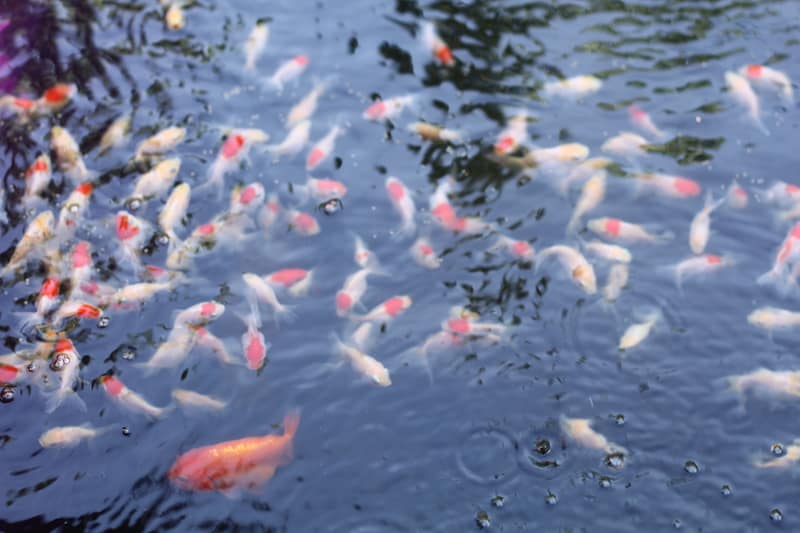
Polyethylene films are the lowest cost option and have good aging properties, but if they are damaged, they are difficult to join or patch because repair must be performed by heat sealing.
HDPE Pond Liner
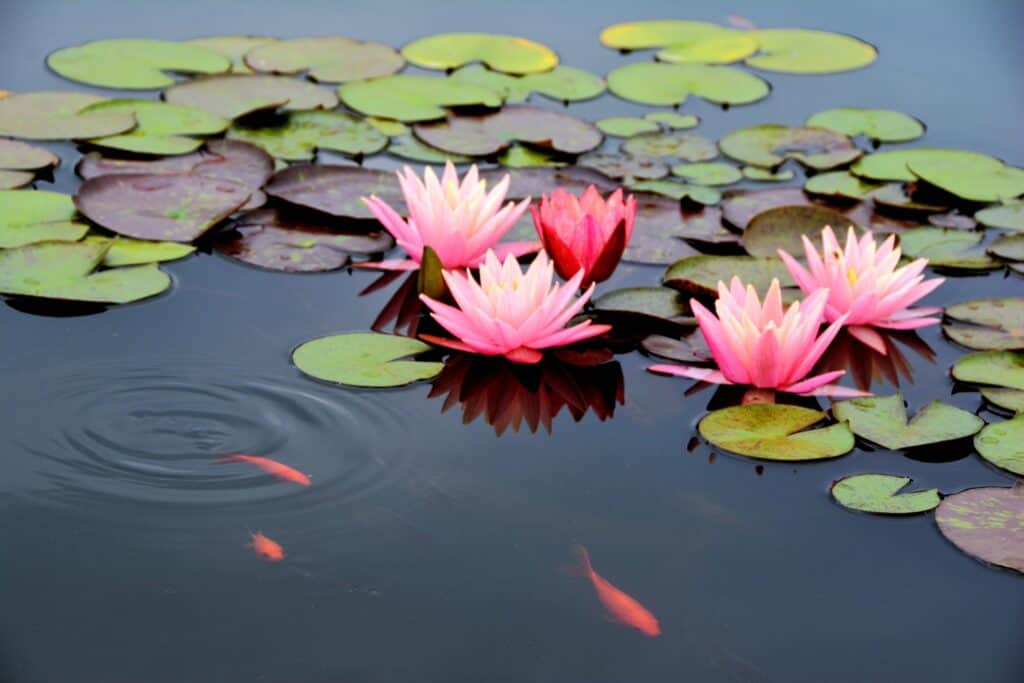
HPDE (high-density polyethylene) pond liners are tough, strong, and very stiff, which means they are not vulnerable to lengthwise tears.
HDPE is very durable, resists a wide range of chemicals, and has strong UV resistance properties while performing well in cold temperatures.
For larger applications, HPDE is ideal because individual sheets of HPDE can be heat-welded together.
HPDE is one of the cheaper materials; however, while the stiffness resists damage, it also makes HPDE more difficult to install.
LLDPE Pond Liner
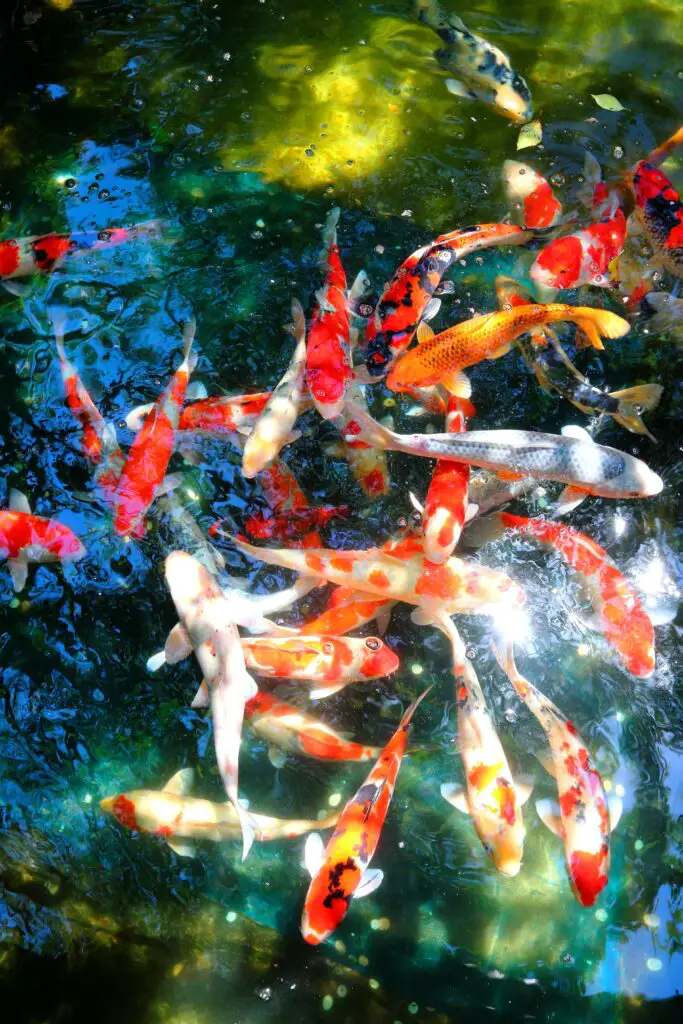
Like HPDE liners, LLDPE (Low-density polyethylene liner) is made from plastic and is weldable, nontoxic to fish, and functions well in typical pondwater temperatures.
LLDPE liners are less dense than HPD liners and are, therefore, more flexible and easier to install and mold around corners and tight nooks and crannies.
Being softer and more pliable, LPDE liners are not as strong as HPDE liners.
While they are not considered durable, the life expectancy is 36 years if installed properly!
RPE (Reinforced Polyethylene) Liner
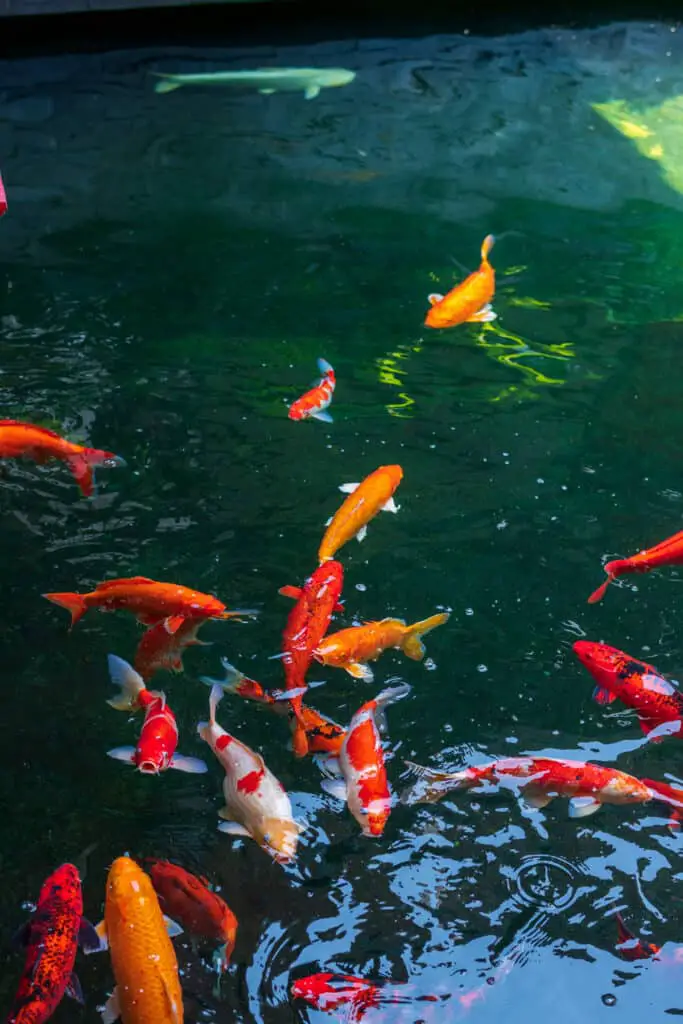
Because RPE is reinforced, it is more durable than most other materials.
RPE liners are thinner than HDPE, LLDPE, and other materials such as PVC and EPDM.
While thinner, RPE linings are stiffer than LLDPE but can still be maneuvered and folded into position.
RPE linings are more expensive than both HPDE and LLDPE liners.
PVC Liners
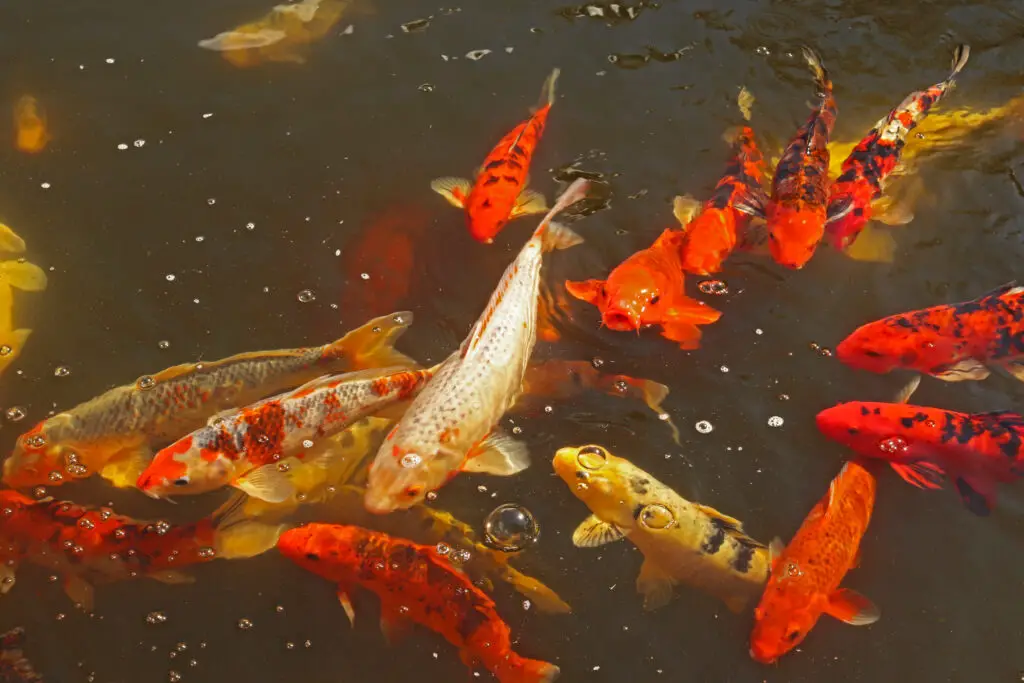
Polyvinyl chloride (PVC) liners are among the most popular lining materials used for koi ponds.
It is one of the lowest-cost materials and has very elastic properties, making it easy to mold into a koi pond. Because it is a strong material, it can be fitted tightly over coarse surfaces with ease.
PVC liners are resistant to chemicals and are durable and resistant to tears and punctures.
Before choosing PVC as a liner, check with local specialists that the offered products are fish friendly and do not include harmful toxins.
EPDM Pond Liner
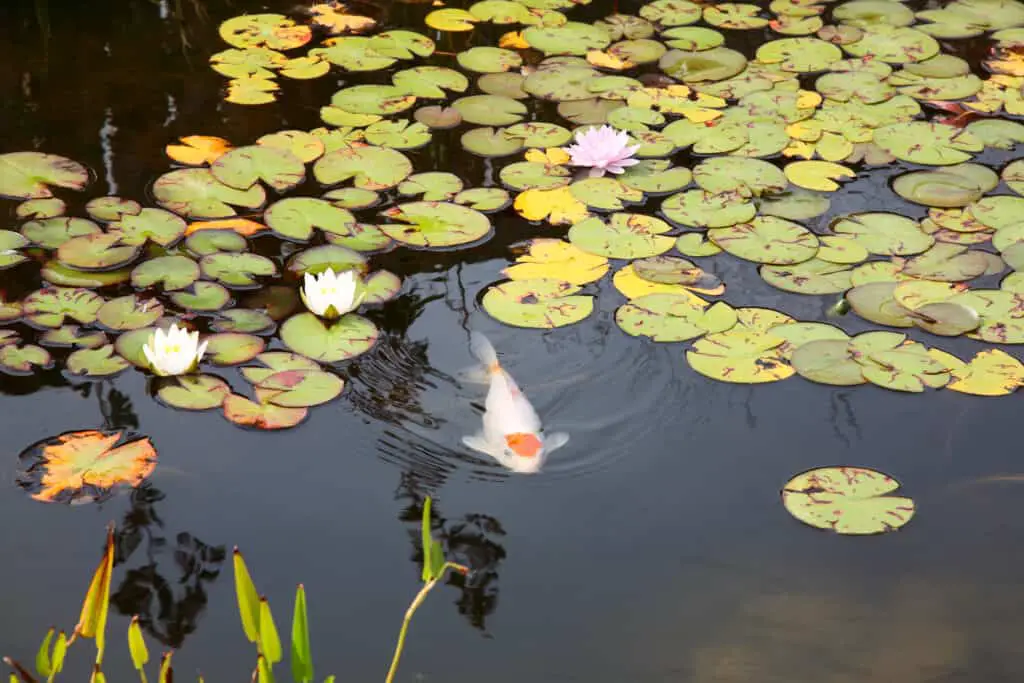
EPDM (Ethylene propylene diene monomer) liners are more expensive and heavier than other pond liners.
EPDM is formed from synthetic rubber and, while being heavier, is also flexible and can be stretched without losing strength.
EPDM liner has minimal expansion and contraction with temperature changes, so it stays in shape despite large temperature shifts.
EPDM liner withstands very cold temperatures and will not crack or become compromised.
EPDM liners are vulnerable to chemicals and are susceptible to degradation from oils and solvents.
How Do I Make A Homemade Pond Liner?

The pond liner has to be robust and durable, with good UV properties and resistance to chemicals.
Sourcing suitable materials with the ideal properties is difficult; however, the following may be available.
Old Swimming Pool Liners
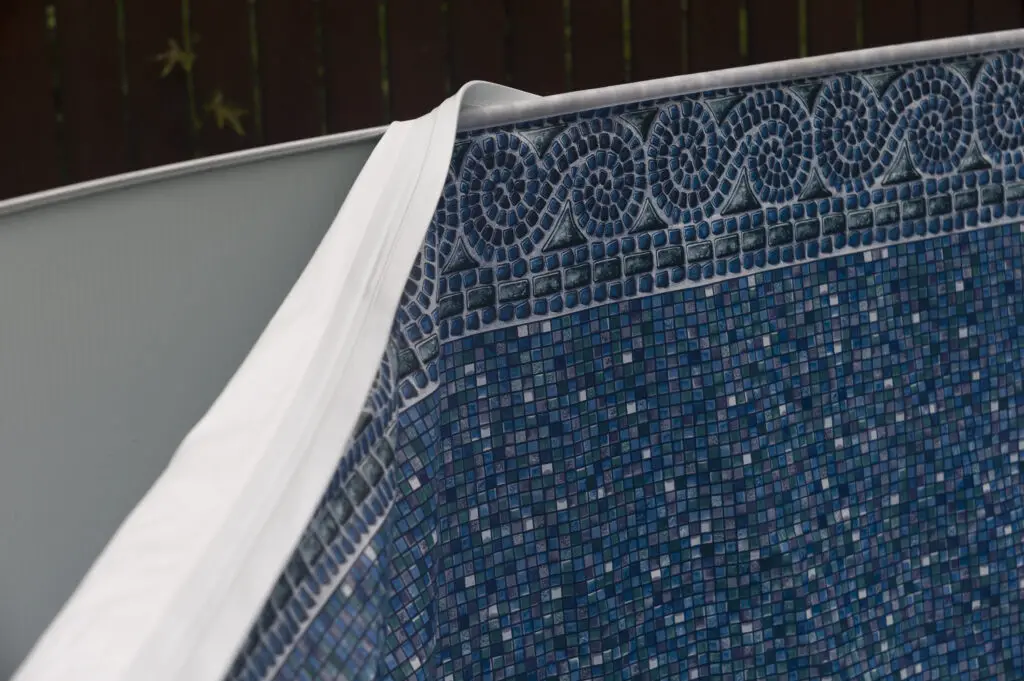
Contact pool companies in your area and ask if they have old pool liners from projects that have reconditioned swimming pools.
These are normally discarded, so if they do have this material, and it is not too badly damaged, they may be willing to give it to you.
Old Tent Material
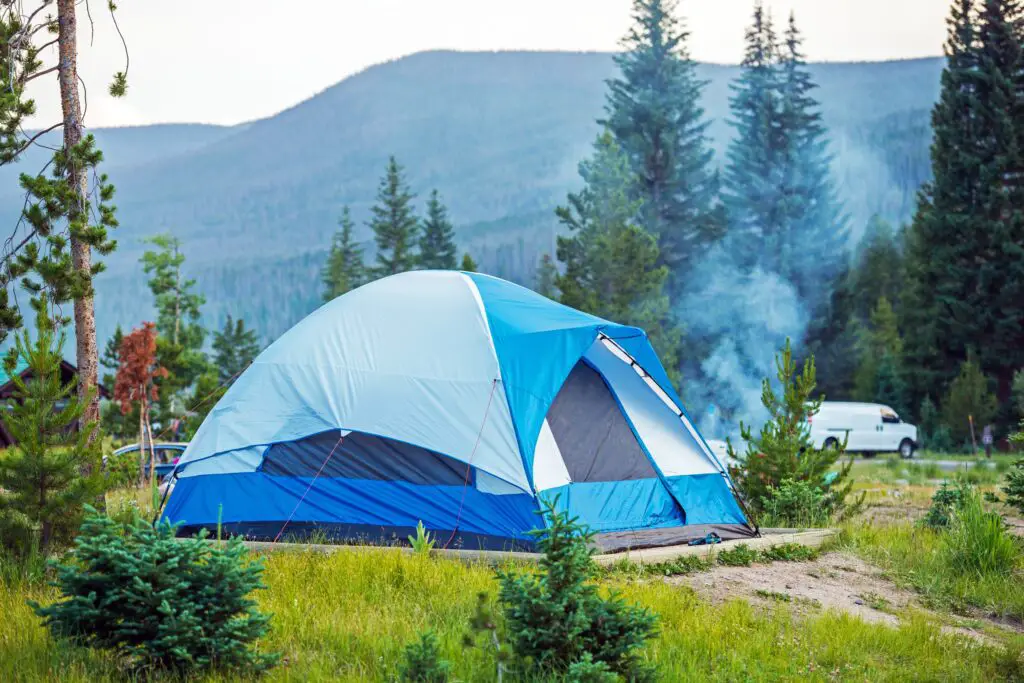
Visit a camping outlet and ask if they have discarded tarpaulin material which they may make available.
Unused Children’s Plastic Baths

If you have a very small pond, using a discarded child’s bath may be a viable alternative.
Pond Liner Underlays Materials
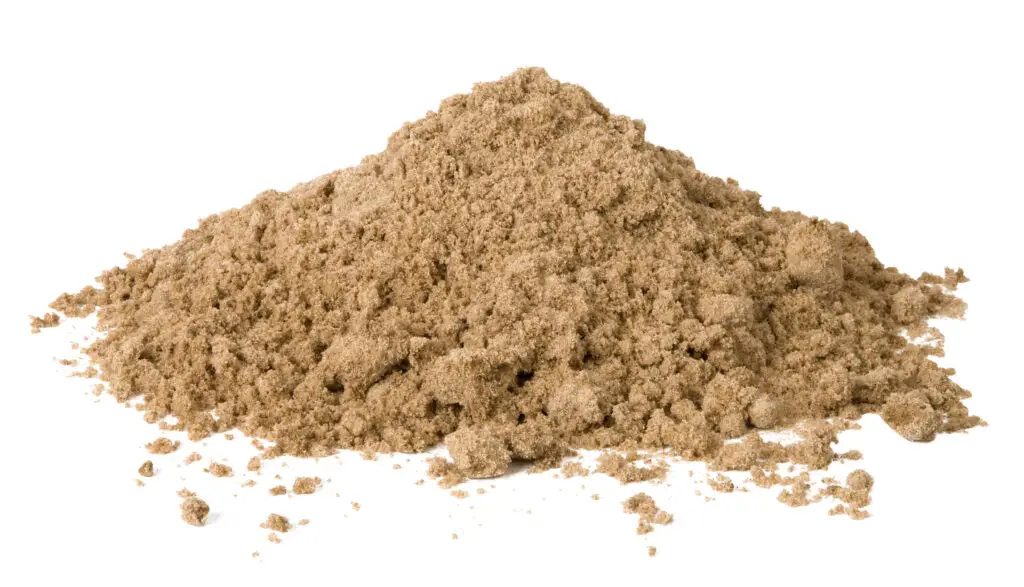
When a koi pond is constructed, there may be sharp and hard material on the bottom, compromising the lining material.
To prevent the lining material from being punctured, it is a good practice to place a 4–5-inch layer of sand to line the base of the pond.
Sand is the optimal material because it automatically molds to shape and covers any sharp points that will puncture the liner.
Conclusion
The koi pond lining you use, or in the case of a natural material like clay, which you don’t use, is critical to a koi pond’s viability and life expectancy. The koi pond lining is one of the most important component choices when building a new project.
Make the correct choice, and your koi pond will give you years of pleasure; however, the opposite is also true. If you skimp on the final selection, the pond will need regular repair and, ultimately, replacement.
References
https://homeguides.sfgate.com/diy-plastic-pond-liners-62053.html

